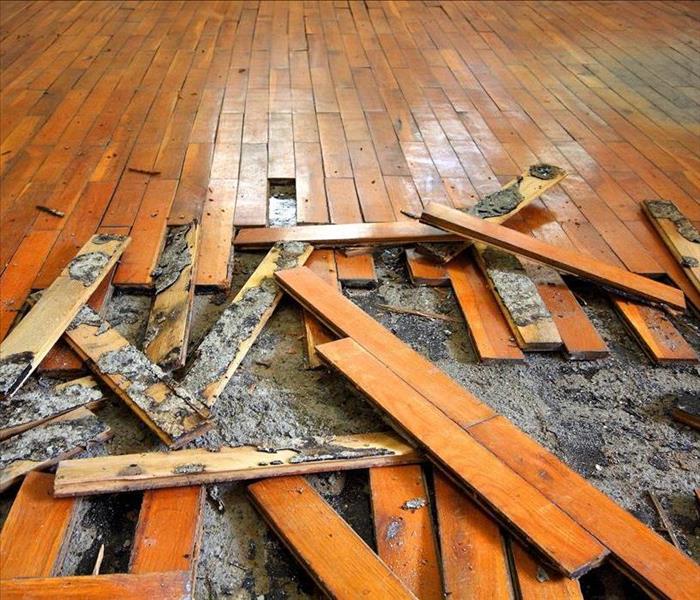How To Care for Water-Damaged Wood Flooring
3/27/2022 (Permalink)
Water Damaged Wood Flooring
Wood floors in a commercial building can sustain significant damage after a pipe burst or other exposure to large amounts of water. It is necessary to respond to water damage quickly to salvage flooring in a structure located in Montgomery, TX.
Extract Standing Water
Wood is a porous material. While commercial wood floors may be varnished to reduce permeability, it is still necessary to remove water quickly. Any of the following methods may be effective, depending on the quantity of water:
- Mop and bucket
- Pump
- Wet-dry vacuum
Removing water from a wood floor as soon as possible can limit the degree of damage. Wood may start to become discolored or warped within a matter of hours and may not be salvageable after days of saturation.
Dry the Floor
After removing water, direct drying methods such as applying towels to the surface and indirect methods such as air movers, fans or dehumidifiers can promote drying. If a pipe burst causes damage and water is removed within hours, no disinfection is necessary. Exposure to contaminated water calls for cleaning and disinfection and may necessitate tearing out and replacing wood flooring.
Restore Damaged Wood
There are several ways to recover wood that has sustained damage from water. Resurfacing wood by sanding can eliminate cupping, which involves floorboards that have become concave or convex due to exposure to moisture. It may be necessary to sand off paint or finish if mold forms underneath this layer of a wet floor prior to treating, drying and refinishing.
Removing standing water from wood floors as soon as possible is essential for limiting damage. Over time, wood may become discolored or warped. In cases where water remains present for an extended period of time, such as a pipe burst that is not immediately detected at a building in Montgomery, TX, it may be necessary to replace wood floors.



 24/7 Emergency Service
24/7 Emergency Service
